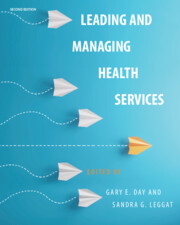Refine search
Actions for selected content:
1132 results
Health outcomes following childhood or adolescent exposure to household food insecurity: a rapid systematic review
-
- Journal:
- Public Health Nutrition / Accepted manuscript
- Published online by Cambridge University Press:
- 19 September 2025, pp. 1-69
-
- Article
-
- You have access
- Open access
- Export citation
11 - Aging Differently
-
- Book:
- Seniorland
- Published online:
- 04 September 2025
- Print publication:
- 18 September 2025, pp 184-198
-
- Chapter
- Export citation

Palestinian Doctors
- Medical Practice and the Transformation of Palestine, 1900–1948
-
- Published online:
- 12 September 2025
- Print publication:
- 02 October 2025
A Human Rights Approach to Agrochemical Pollution: Lessons to be Learned from Climate Change Litigation?
-
- Journal:
- Transnational Environmental Law , First View
- Published online by Cambridge University Press:
- 08 September 2025, pp. 1-25
-
- Article
-
- You have access
- Open access
- HTML
- Export citation
11 - Leading interprofessional teams
- from Part 3 - Engages Others
-
-
- Book:
- Leading and Managing Health Services
- Published online:
- 15 August 2025
- Print publication:
- 28 August 2025, pp 122-130
-
- Chapter
- Export citation
25 - Successfully managing conflict
- from Part 5 - Drives Innovation
-
-
- Book:
- Leading and Managing Health Services
- Published online:
- 15 August 2025
- Print publication:
- 28 August 2025, pp 276-286
-
- Chapter
- Export citation
3 - Leading ethically
- from Part 2 - Leads Self
-
-
- Book:
- Leading and Managing Health Services
- Published online:
- 15 August 2025
- Print publication:
- 28 August 2025, pp 30-39
-
- Chapter
- Export citation
12 - Clinical governance
- from Part 3 - Engages Others
-
-
- Book:
- Leading and Managing Health Services
- Published online:
- 15 August 2025
- Print publication:
- 28 August 2025, pp 131-141
-
- Chapter
- Export citation
19 - Managing and leading staff
- from Part 4 - Achieves Outcomes
-
-
- Book:
- Leading and Managing Health Services
- Published online:
- 15 August 2025
- Print publication:
- 28 August 2025, pp 210-220
-
- Chapter
- Export citation
20 - Project management
- from Part 4 - Achieves Outcomes
-
-
- Book:
- Leading and Managing Health Services
- Published online:
- 15 August 2025
- Print publication:
- 28 August 2025, pp 221-232
-
- Chapter
- Export citation
23 - Creativity and visioning
- from Part 5 - Drives Innovation
-
-
- Book:
- Leading and Managing Health Services
- Published online:
- 15 August 2025
- Print publication:
- 28 August 2025, pp 258-267
-
- Chapter
- Export citation
How much is too much? A methodological investigation of the literature on alcohol consumption and health
-
- Journal:
- Journal of Wine Economics , First View
- Published online by Cambridge University Press:
- 27 August 2025, pp. 1-13
-
- Article
-
- You have access
- Open access
- HTML
- Export citation
3 - Climate Change Worldviews and the Scale of Environmental Justice
- from Part I - Movement Politics
-
-
- Book:
- Stability and Politicization in Climate Governance
- Published online:
- 07 August 2025
- Print publication:
- 21 August 2025, pp 35-48
-
- Chapter
-
- You have access
- Open access
- HTML
- Export citation

Leading and Managing Health Services
-
- Published online:
- 15 August 2025
- Print publication:
- 28 August 2025
-
- Textbook
- Export citation
Healthy eating score and all-cause mortality: prospective findings from the Chilean National Health Survey
-
- Journal:
- British Journal of Nutrition , First View
- Published online by Cambridge University Press:
- 13 August 2025, pp. 1-8
-
- Article
-
- You have access
- Open access
- HTML
- Export citation
Chapter Eight - Nonsmoking Environments
- from Part II
-
- Book:
- From Manners to Rules
- Published online:
- 29 August 2025
- Print publication:
- 07 August 2025, pp 264-307
-
- Chapter
- Export citation
Promoting physical activity among seniors in Abu Dhabi: an experimental test of the “forever fit” nudge
-
- Journal:
- Journal of the Economic Science Association ,
- Published online by Cambridge University Press:
- 07 August 2025, pp. 1-12
-
- Article
-
- You have access
- Open access
- HTML
- Export citation
Impact of intergenerational educational mobility on the health of older parents: evidence from rural China
-
- Journal:
- Ageing & Society , First View
- Published online by Cambridge University Press:
- 24 July 2025, pp. 1-27
-
- Article
- Export citation
4 - A State-of-the-Art All-Black Hospital
-
- Book:
- A Black Army
- Published online:
- 16 June 2025
- Print publication:
- 17 July 2025, pp 77-98
-
- Chapter
- Export citation
Supreme Court Impacts in Public Health Law: 2024-2025
-
- Journal:
- Journal of Law, Medicine & Ethics ,
- Published online by Cambridge University Press:
- 10 July 2025, pp. 1-4
-
- Article
-
- You have access
- Open access
- HTML
- Export citation
